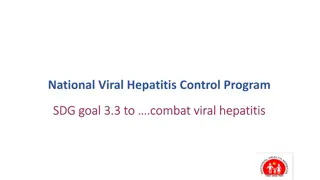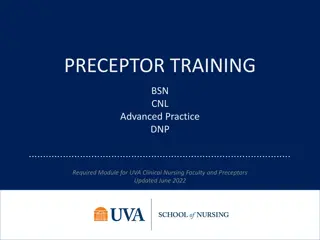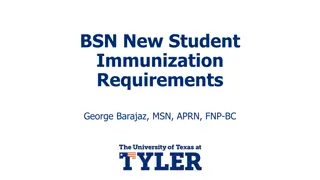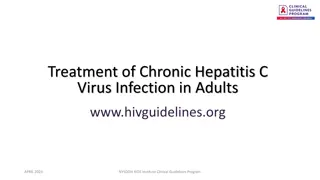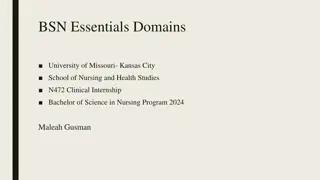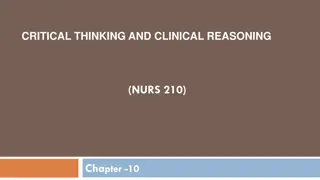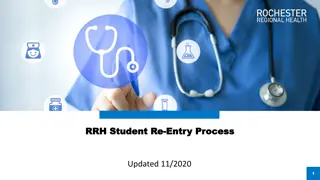Clinical Excellence in Hepatitis C Nursing: SCENS Program Overview
Demonstrating competency in infection control, abdominal assessment, specimen collection, and communication is crucial in nursing care for patients with Hepatitis C. The SCENS program focuses on key learning objectives to enhance clinical proficiency, address potential issues, and understand the complications associated with this bloodborne infection. By following standard precautions and safety measures, nurses can effectively manage and provide quality care for patients with Hepatitis C.
Download Presentation

Please find below an Image/Link to download the presentation.
The content on the website is provided AS IS for your information and personal use only. It may not be sold, licensed, or shared on other websites without obtaining consent from the author. Download presentation by click this link. If you encounter any issues during the download, it is possible that the publisher has removed the file from their server.
E N D
Presentation Transcript
Simulations for Clinical Excellence in Nursing Services SCENS Welcome To
Learning Objectives SCENS 1. Demonstrate appropriate infection control measures when caring for the patient with hepatitis C Perform a focused abdominal assessment Demonstrate appropriate steps required to obtain and handle lab specimens Communicate effectively when performing an abdominal assessment and obtaining lab specimens for the patient with hepatitis C 2. 3. 4.
Why? SCENS Overall statistics Statistics for Veterans VHA Directive 1300.01 VHA Viral Hepatitis Program https://www.hepatitis.va.gov National Patient Safety Goals
Hepatitis C SCENS Most common bloodborne infection in the United States Transmission Infection control practices Centers for Disease Control and Prevention (CDC) Standard Precautions Hand hygiene Personal protective equipment Safe injection practices Appropriate aseptic techniques
Complication of Hepatitis C SCENS Cirrhosis Ascites Albumin production Drop in hydrostatic pressure Assessment Respiratory status Fluid wave Abdominal girth Daily weights
Abdominal Assessment SCENS Inspection Auscultation Palpation Percussion
Specimen Collection SCENS Orders Scope of practice Patient identification Equipment Hand hygiene PPE Joint Commission requirements Labeling of the specimen Packaging Delivery of the specimen Follow-up to ensure the specimen was received Who is ultimately responsible? Safety measures
Potential Issues SCENS Psychosocial Equipment or supplies Positioning of the patient Difficulty obtaining the specimen
Summary SCENS 1. Reviewed appropriate infection control measures when caring for the patient with hepatitis C Performed a focused abdominal assessment Demonstrated appropriate steps required to obtain and handle lab specimens Discussed communication when performing an abdominal assessment and obtaining lab specimens for the patient with hepatitis C 2. 3. 4.
Gastrointestinal: Abdominal Assessment and Labs SCENS Kenneth Green Sixty five (65) year-old male with a history of Hepatitis C presents with complaints of abdominal discomfort (3/10 scale) for three (3) days and unintentional twenty (20) pound weight loss. He has a history of alcohol (ETOH) abuse and has been refusing to take his medication. He was admitted with ascites, weight loss, and malnutrition. Past Medical History: Hepatitis C, alcohol (ETOH) abuse, and benign prostatic hypertrophy (BPH) Past Surgical History: Transurethral Resection of the prostate (TURP) Medications: Ledispavir 90mg/Sofosbuvir 400mg daily Allergies: Penicillin



